Complete Guide to Importing Data into Singdata Lakehouse
Data Ingestion: Real-time Multi-table Synchronization via Singdata Lakehouse Studio (CDC, Public Network Connection)
Overview
Use Case
Existing data sources (including databases and data warehouses) have publicly accessible addresses (such as through public NAT mapping), require simultaneous multi-table synchronization, have high data freshness requirements (often at the minute or even second level), and can accept higher synchronization costs to synchronize data from source tables to Lakehouse tables.
Singdata Lakehouse Studio's real-time multi-table synchronization supports multi-table merging, allowing data from multiple source tables in a structured system to be merged into a single Singdata Lakehouse target table.
Implementation Steps
Create a New Real-time Multi-table Synchronization Task
Navigate to Development -> Tasks, click "+", select "Real-time Multi-table Synchronization", and create a new real-time multi-table synchronization task.
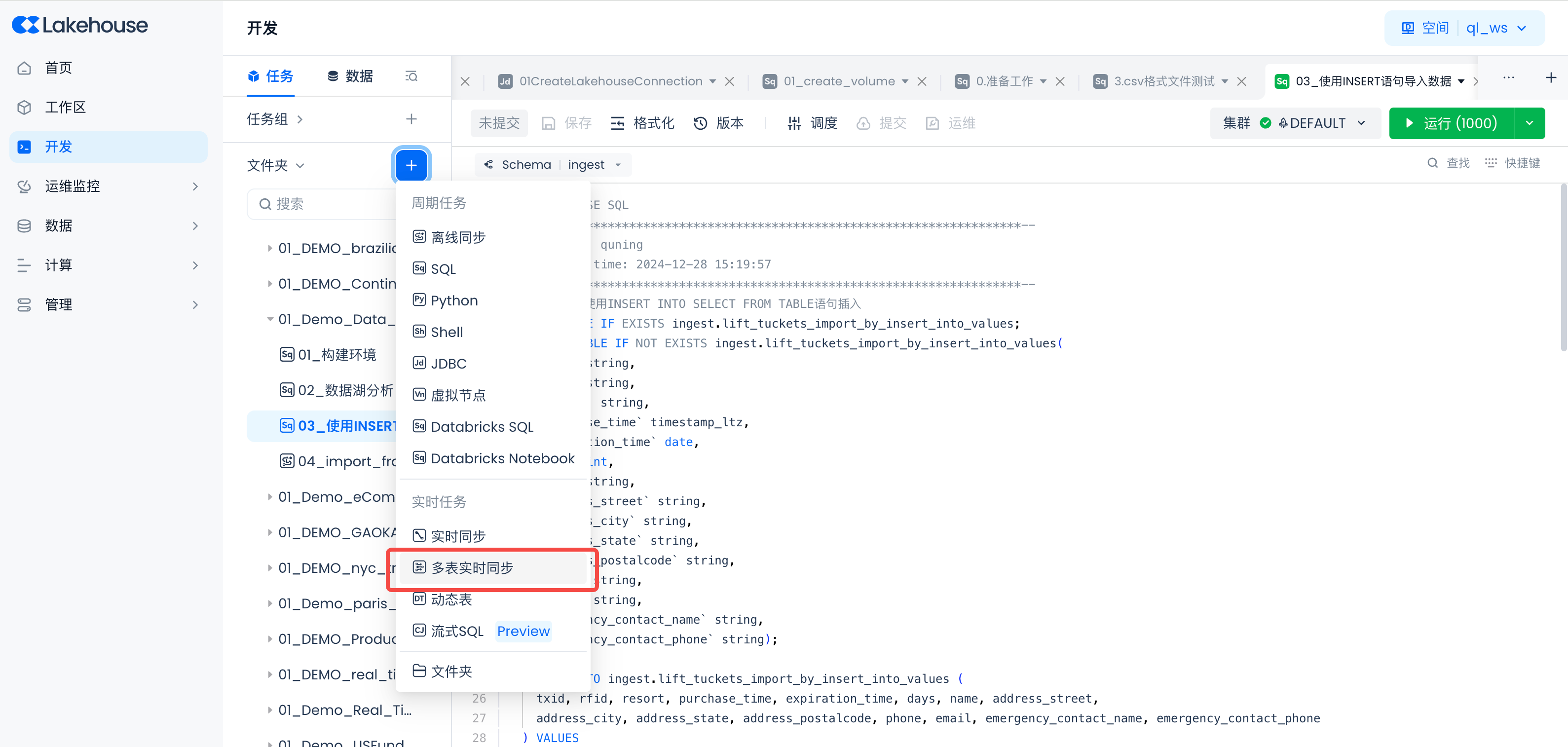
Task Name: 06_multi_table_rt_sync_from_pg
Select "PostgreSQL" as the Source Data

Select Synchronization Objects
Singdata Lakehouse Studio will automatically synchronize the source database structure for selection:
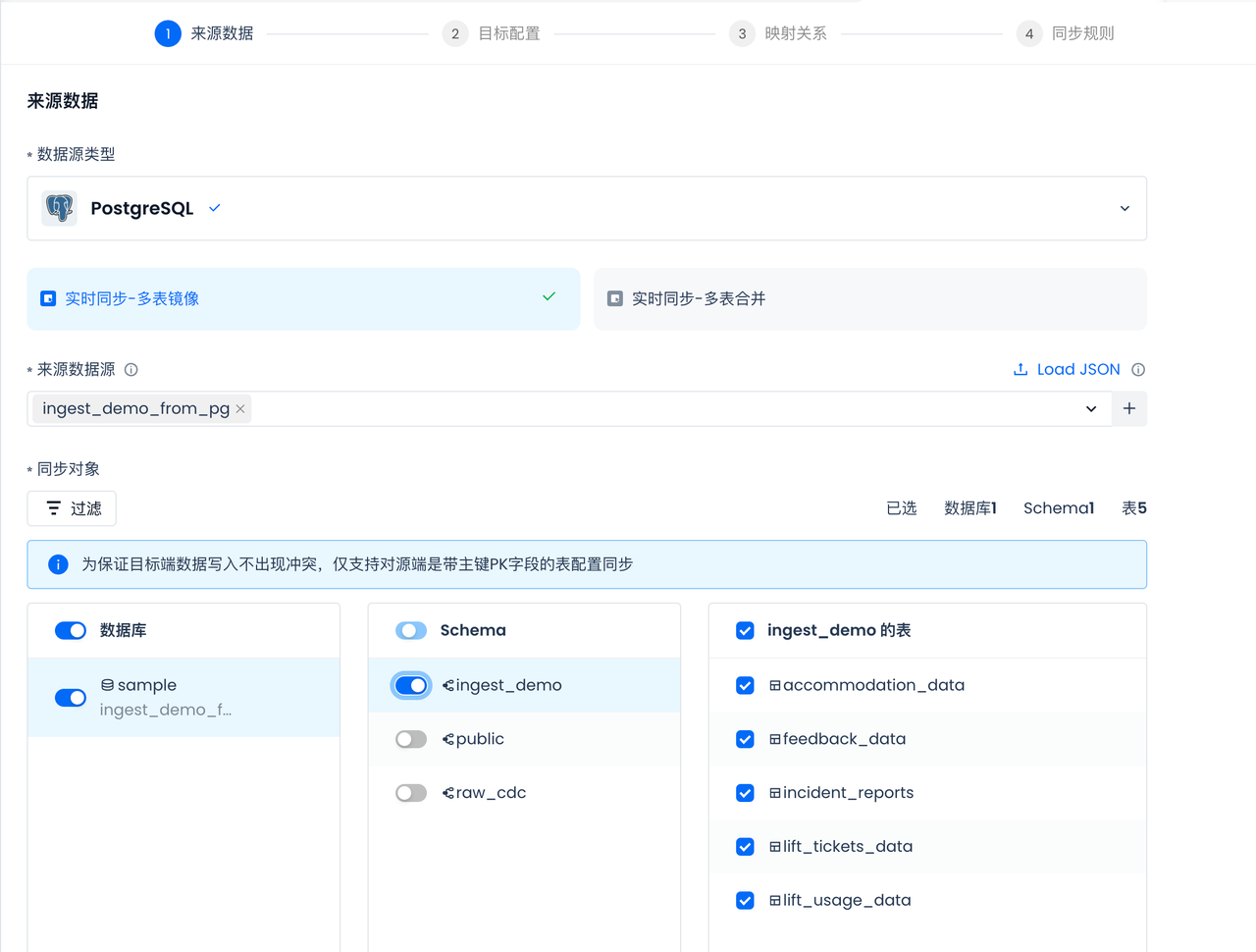
Database CDC Configuration
Create a Slot

Plugin Type: pgoutput
Slot Name: slot_for_multi_table_ingest_demo
Target Configuration
Rule Expression: multitable_sync_{SOURCE_TABLE}. Add the prefix multitable_sync_{SOURCE_TABLE} to the target table to distinguish it from tables synchronized by other methods.
Check field mapping to ensure all mappings are successful:
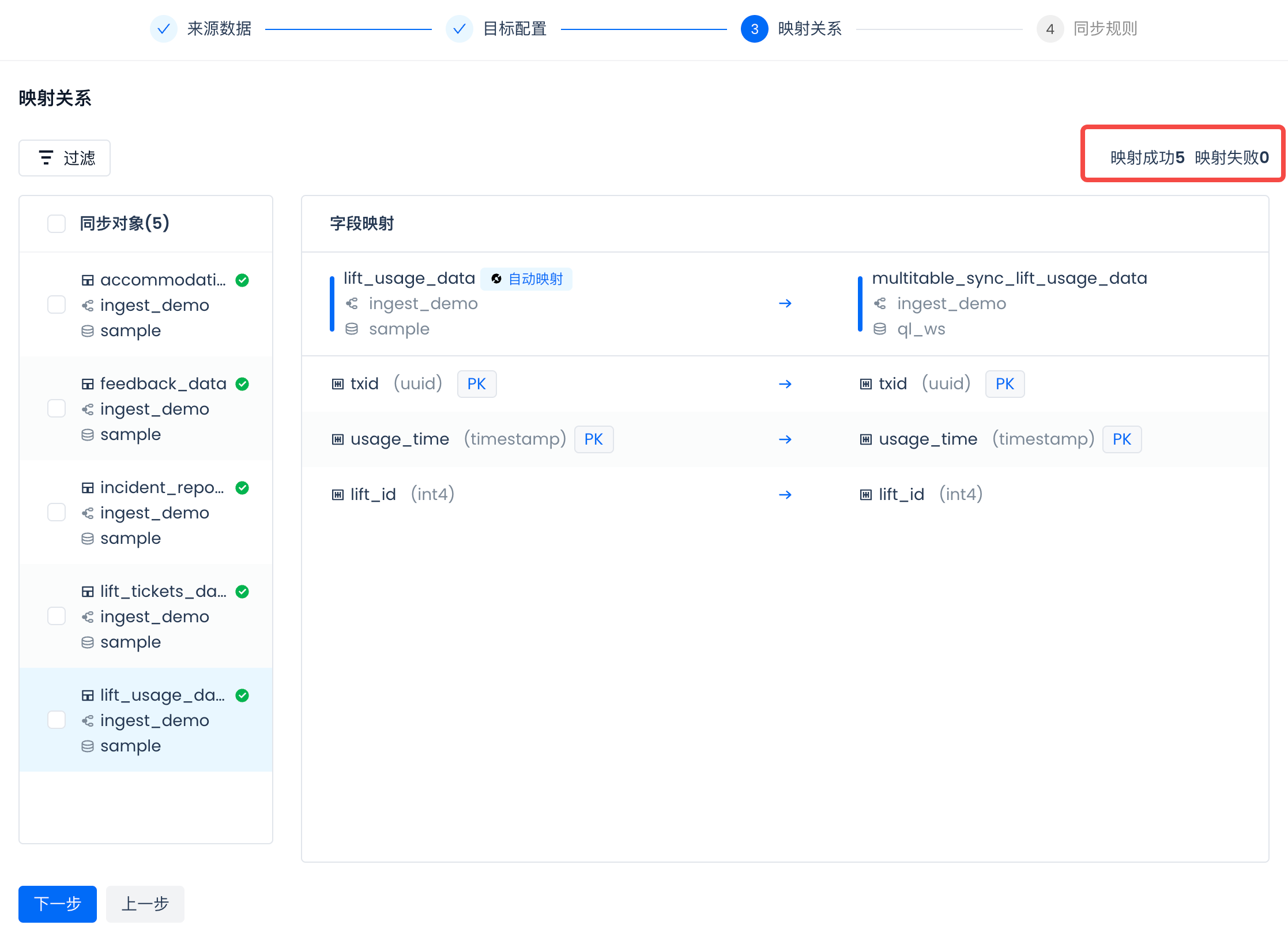
Configure Synchronization Rules
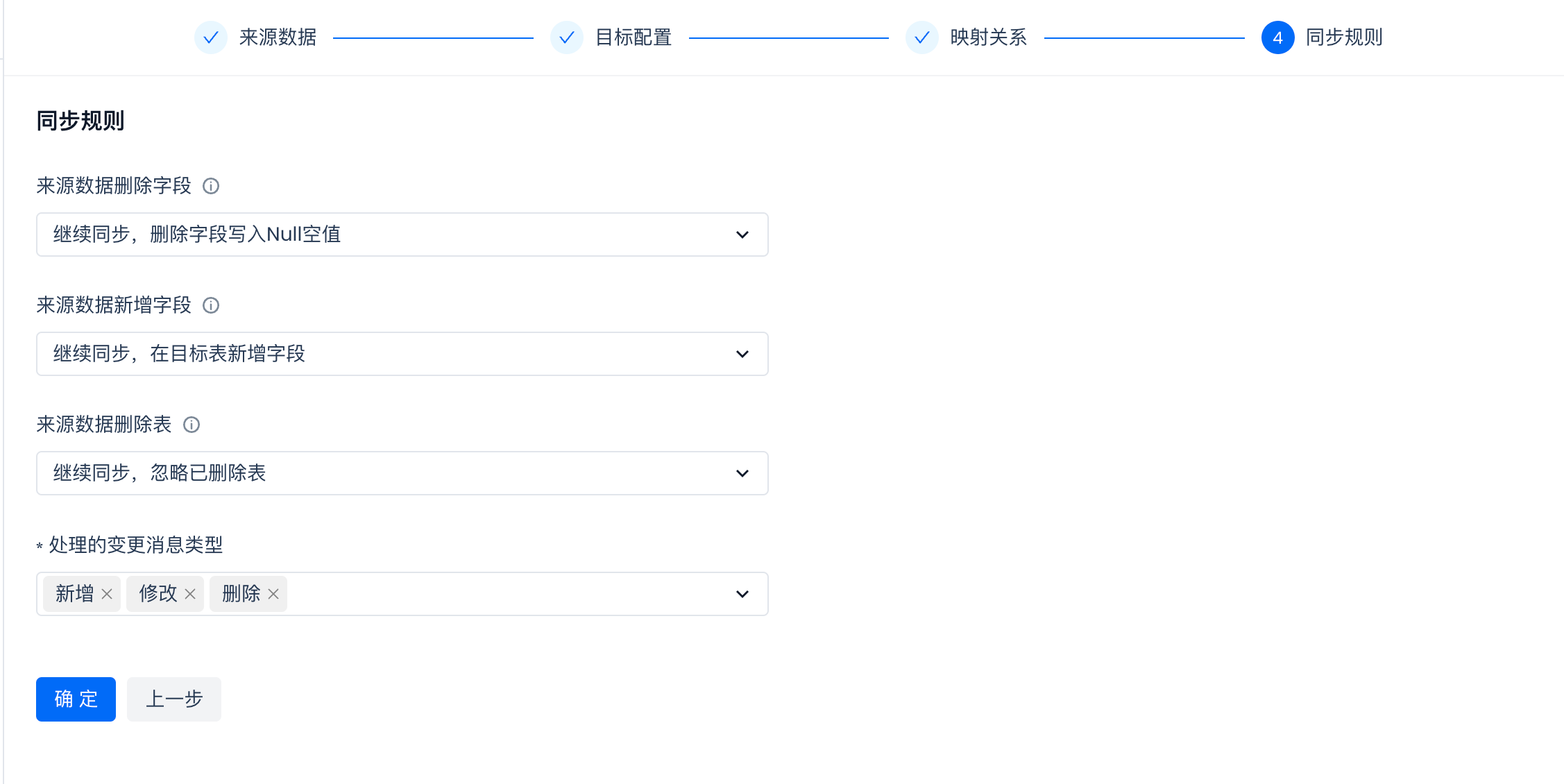
Submit
Submit the real-time multi-table synchronization task after configuration:

Operations and Maintenance
Maintain the real-time multi-table synchronization task:

Start
Start the real-time multi-table synchronization task:

For the first start of this real-time multi-table synchronization task, select "Stateless Start" and "Full Data Synchronization":
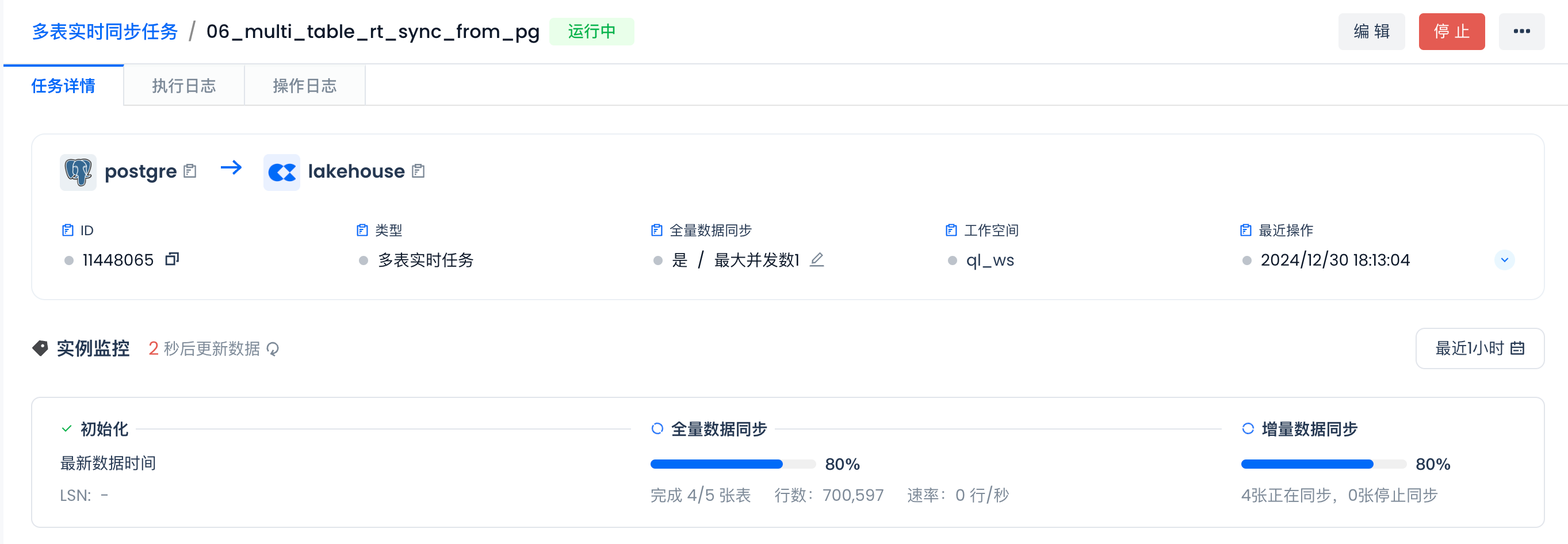
After starting, you can view the detailed status of the task. Once the full synchronization is complete, the system will automatically begin incremental real-time synchronization.
Progress Monitoring
Full synchronization in progress:
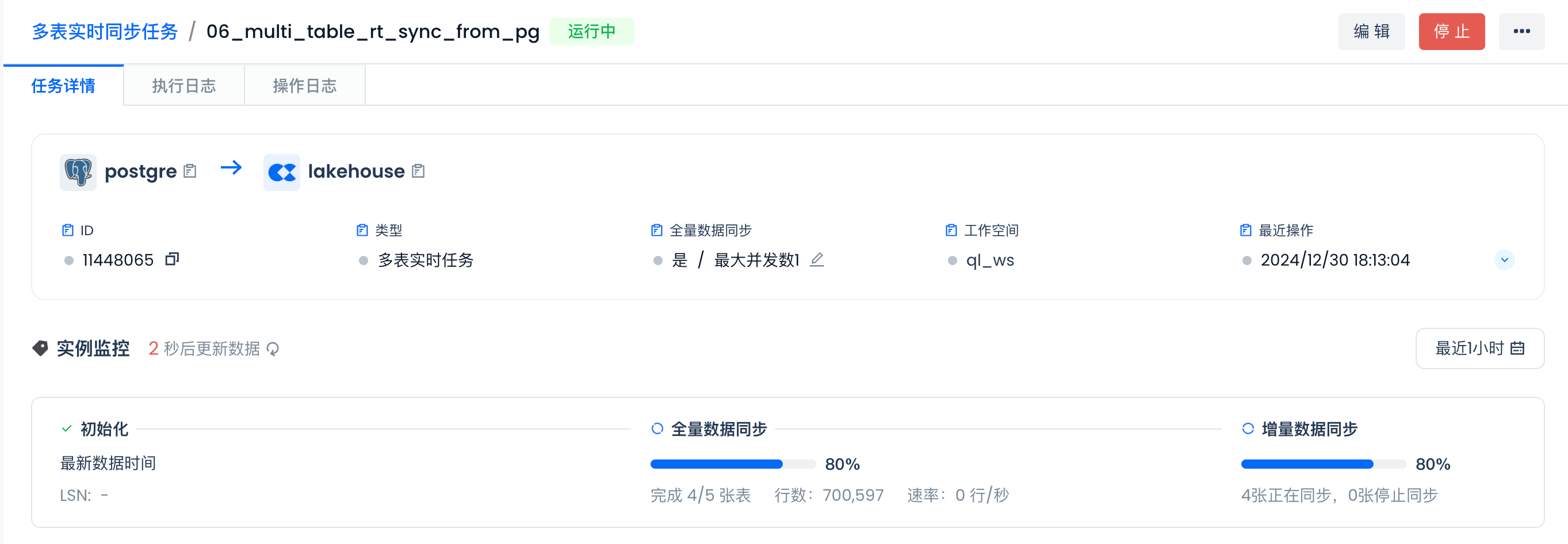
Full synchronization complete.
Real-time synchronization begins:
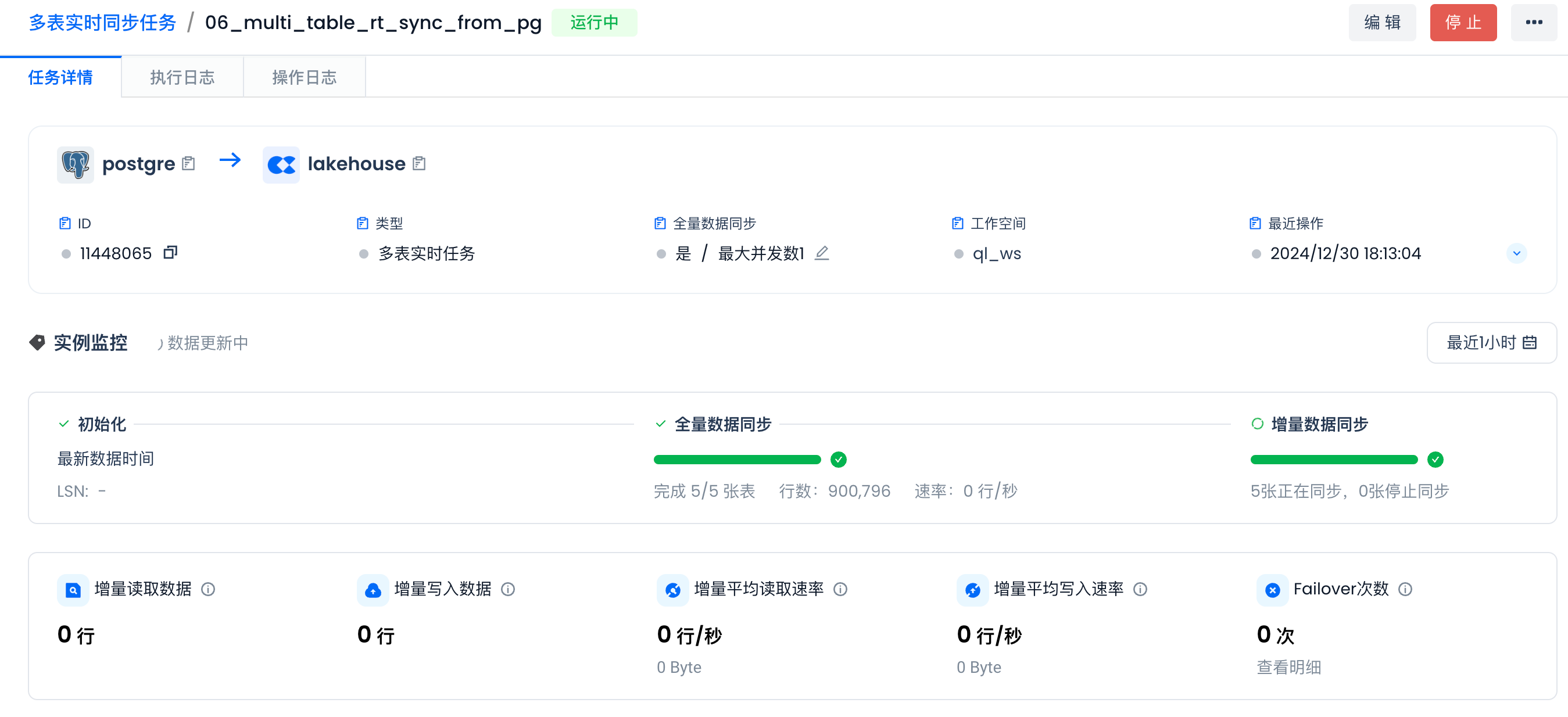
Incremental Real-time Synchronization
Insert incremental data into the PG database for incremental real-time synchronization. Create a new file in VS Code named “rt_data_generate_insert_into_pg.py” and copy the following code into it:
import os
import sys
import rapidjson as json
import optional_faker as _
import uuid
import random
import time
import psycopg2
from faker import Faker
from datetime import date, datetime, timedelta
from dotenv import load_dotenv
load_dotenv()
fake = Faker('zh_CN') # Use Chinese locale
resorts = ["大董烤鸭", "京雅堂", "新荣记", "仿膳饭庄", "全聚德",
"利群烤鸭店", "鼎泰丰", "海底捞", "江苏会所", "店客店来",
"周黑鸭", "夜上海", "香宫", "长安壹号", "翡翠餐厅", "北京饭店",
"四川豆花饭庄", "海底捞火锅", "川办餐厅", "南门火锅",
"胡同", "翠园", "利苑酒家", "御宝轩", "金鼎轩",
"外婆家", "大董", "顺峰海鲜酒家", "小龙坎火锅",
"新大陆中餐厅", "京兆尹", "鼎泰丰(台湾)", "滇池来客",
"绿波廊", "南美时光"]
# Load database credentials from environment variables
DB_NAME = 'postgres'
DB_USER = 'postgres'
DB_PASSWORD = 'postgres'
DB_HOST = 'localhost'
DB_PORT = '5432'
def connect_db():
conn = psycopg2.connect(
dbname=DB_NAME,
user=DB_USER,
password=DB_PASSWORD,
host=DB_HOST,
port=DB_PORT
)
return conn
def random_date_in_2025():
start_date = date(2025, 1, 1)
end_date = date(2025, 12, 31)
return start_date + timedelta(days=random.randint(0, (end_date - start_date).days))
def random_datetime_between(start_year, end_year):
start_datetime = datetime(start_year, 1, 1)
end_datetime = datetime(end_year, 12, 31, 23, 59, 59)
random_seconds = random.randint(0, int((end_datetime - start_datetime).total_seconds()))
return start_datetime + timedelta(seconds=random_seconds)
def insert_lift_ticket(cursor, lift_ticket):
cursor.execute("""
INSERT INTO ingest_demo.lift_tickets_data (txid, rfid, resort, purchase_time, expiration_time, days, name, address_street, address_city, address_state, address_postalcode, phone, email, emergency_contact_name, emergency_contact_phone)
VALUES (%s, %s, %s, %s, %s, %s, %s, %s, %s, %s, %s, %s, %s, %s, %s)
""", (
lift_ticket['txid'], lift_ticket['rfid'], lift_ticket['resort'],
lift_ticket['purchase_time'], lift_ticket['expiration_time'],
lift_ticket['days'], lift_ticket['name'], lift_ticket['address_street'],
lift_ticket['address_city'], lift_ticket['address_state'],
lift_ticket['address_postalcode'], lift_ticket['phone'],
lift_ticket['email'], lift_ticket['emergency_contact_name'],
lift_ticket['emergency_contact_phone']
))
def generate_lift_ticket():
global resorts, fake
lift_ticket = {
'txid': str(uuid.uuid4()),
'rfid': hex(random.getrandbits(96)),
'resort': fake.random_element(elements=resorts),
'purchase_time': random_datetime_between(2021, 2024),
'expiration_time': random_date_in_2025(),
'days': fake.random_int(min=1, max=7),
'name': fake.name(),
'address_street': fake.street_address(),
'address_city': fake.city(),
'address_state': fake.province(),
'address_postalcode': fake.postcode(),
'phone': fake.phone_number(),
'email': fake.email(),
'emergency_contact_name': fake.name(),
'emergency_contact_phone': fake.phone_number(),
}
return lift_ticket
def main(total_count, batch_size, sleep_time):
conn = connect_db()
cursor = conn.cursor()
batch_data = []
for _ in range(total_count):
lift_ticket = generate_lift_ticket()
batch_data.append(lift_ticket)
if len(batch_data) >= batch_size:
for ticket in batch_data:
insert_lift_ticket(cursor, ticket)
conn.commit()
batch_data = []
time.sleep(sleep_time)
# Insert any remaining data
if batch_data:
for ticket in batch_data:
insert_lift_ticket(cursor, ticket)
conn.commit()
cursor.close()
conn.close()
if __name__ == "__main__":
if len(sys.argv) < 4:
print("Please provide total rows, rows per batch, and sleep seconds per batch. For example: python rt_data_generate_insert_into_pg.py 1000 100 10")
sys.exit(1)
total_count = int(sys.argv[1])
batch_size = int(sys.argv[2])
sleep_time = int(sys.argv[3])
main(total_count, batch_size, sleep_time)
In VS Code, create a new "Terminal" and run the following command to activate the Python environment created in the "Environment Setup" step. If you are already in the cz-ingest-examples environment, please skip this step.
conda activate cz-ingest-examples
Then run the following command in the same terminal:
Insert 100,000 rows of data into the ingest_demo.lift_tickets_data table, inserting 100 rows at a time, with a 10-second sleep between each batch.
python rt_data_generate_insert_into_pg.py 100000 100 10
In Singdata Lakehouse Studio, view the real-time synchronization progress:
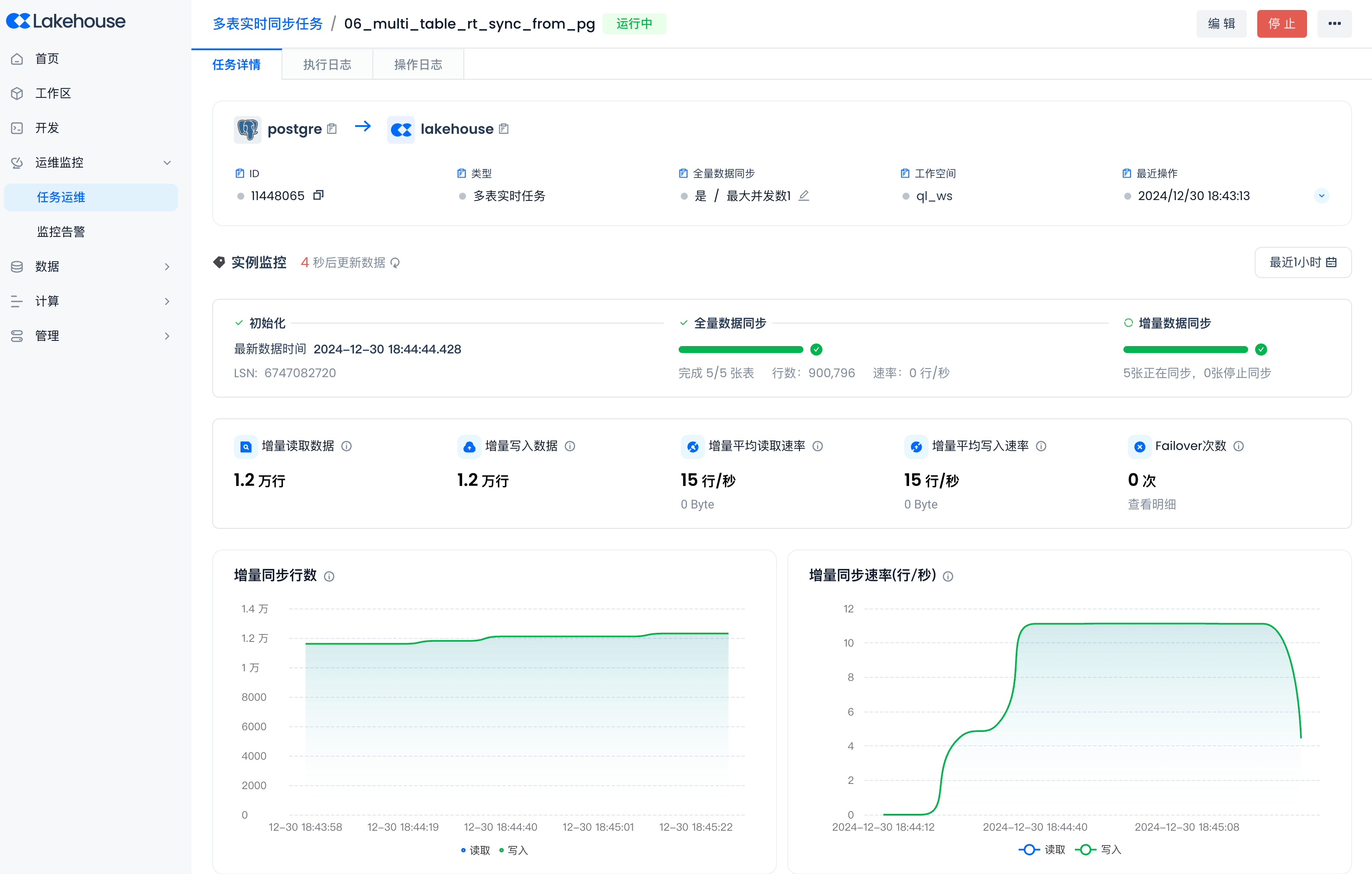
Next Steps
Insert new data into the data source to view the results of incremental synchronization.
"Stop" the running of this synchronization task. The virtual compute cluster set for this task has an automatic stop feature, which will stop running within the "auto stop" seconds after the job stops, saving costs and achieving on-demand operation.
Resources
Real-time Data Writing
Multi-table Real-time Synchronization
Capture Change Data (CDC) and Data Processing through Multi-table Real-time Synchronization and Dynamic Tables in Singdata Lakehouse













